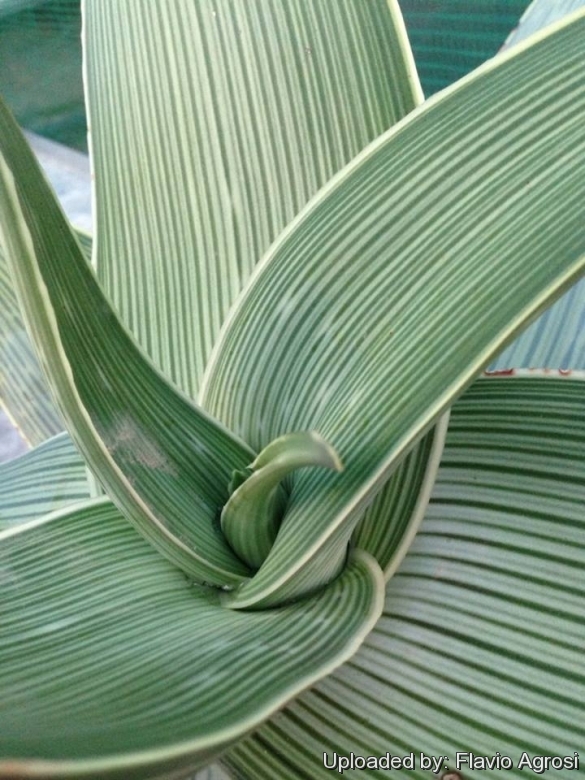
Aloe striata subs. karasbergensis Photo by: Flavio Agrosi
Synonyms:
See all synonyms of Aloe striata
Common Names include:
ENGLISH: Karasberg Aloe, Coral Aloe, Karasburg Coral Aloe
Description: Aloe striataSN|685]]SN|685]] subsp. karasbergensis is an interesting species with greyish-green leaves and red, green - tipped flowers. This is a slightly larger, longer leaved version of Aloe striataSN|685]]SN|685]] with prominent, very ornamental, thin lines along the leaves. Large plants look very attractive. It is also related to Aloe buhriiSN|27581]]SN|27581]], but the leaves are soft and more curved and striated.
Habit: Usually acaulescent, sometimes caulescent, simple or with up to 19 branches from suckers at the base of the rosettes with persisting dry leaves.
Stem: up to 30 cm tall.
Rosette: Low-growing, dense with very broad leaves up to 60 cm tall and 1 meter wide.
Leaves: Smooth, soft, broad- to narrow-lanceolate, curved, pale blue-green, greyish-green to greyish-yellow without markings and conspicuously or obscurely marked with longitudinal dark-green lines. In full sun the leaves take on a pink cast with dark reddish striations. Margin 2 - 3 mm dull white, usually thornless, sometimes crenulate with small teeth (Aloe striataSN|685]]SN|685]] usually is smooth along the leaf edges).
Inflorescence: slender 50-75 cm tall many-branched, festooned. Terminal racemes conical and lax.
Flowers: Green-tipped pink to pale coral-red, 25 - 27 mm long (Aloe striataSN|685]]SN|685]] usually bright orange).
Blooming seson: Flowers multiple times a year but mainly in mid to late winter and flowers last up to three months.
Chromosome number: 2n = 14
Subspecies, varieties, forms and cultivars of plants belonging to the Aloe striata group
Bibliography: Major references and further lectures
1) Urs Eggli “Illustrated Handbook of Suculent Plants: Monocotyledons” Springer, 2001.
2) Susan Carter, John J. Lavranos, Leonard E. Newton, Colin C. Walker “Aloes. The definitive guide.” Kew Publishing, Royal Botanic Gardens, Kew 2011, ISBN 978-1-84246-439-7, S. 251.
3) Court, D, 1981. “Succulent flora of Southern Africa” Balkema, Cape Town.
4) Germishuizen, G. & Meyer, N.L. (eds) 2003. “Plants of southern Africa : an annotated checklist.” Strelitzia 14. National Botanical Institute, Pretoria.
5) Nichols, G. 2005. “Growing rare plants, a practical handbook on propagating the treatened plants of southern Africa” Southern African Botanical Diversity Network Report No. 36. SABONET, Pretoria .
6) Gilbert Westacott Reynolds “The aloes of South Africa” A.A. Balkema, 1974
7) Van Jaarsveld, E., Van Wyk, B-E. & Smith, G. 2000. “Succulents of South Africa” Cape Town , Tafelberg
8) Reynolds, G. W. 1982. “The Aloes of South Africa” ed. 4. Rotterdam.
pers, 1971
9) Van Wyk, B-E. & Smith, G. 1996. “Guide to the aloes of South Africa” Briza Publications, Pretoria.
10) Barbara Jeppe “South African aloes” Purnell, 1974
11) Ben-Erik Van Wyk, Gideon Smith “Guide to the Aloes of South Africa” 2nd edition, 2003
13) Kristo Pienaar “South African 'What Flower Is That'?” Struik, 01/Aug/2003
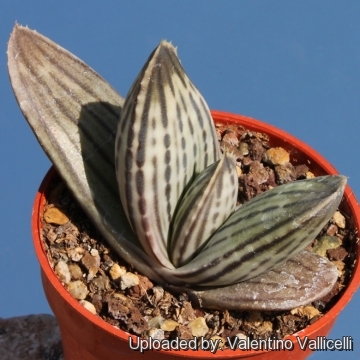 Aloe striata subs. karasbergensis Photo by: Valentino Vallicelli
Aloe striata subs. karasbergensis Photo by: Valentino Vallicelli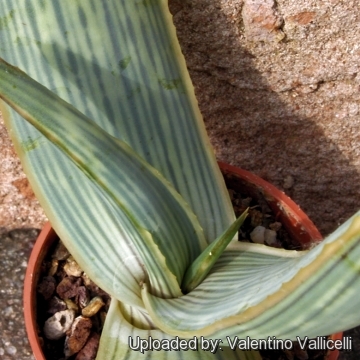 Aloe striata subs. karasbergensis Photo by: Valentino Vallicelli
Aloe striata subs. karasbergensis Photo by: Valentino Vallicelli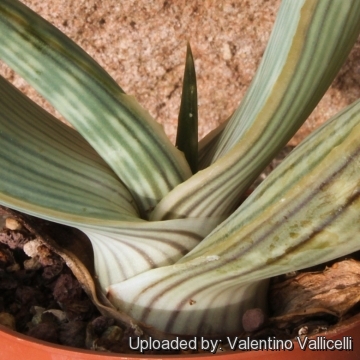 Aloe striata subs. karasbergensis Photo by: Valentino Vallicelli
Aloe striata subs. karasbergensis Photo by: Valentino Vallicelli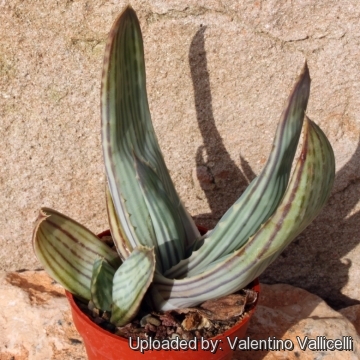 Aloe striata subs. karasbergensis Photo by: Valentino Vallicelli
Aloe striata subs. karasbergensis Photo by: Valentino Vallicelli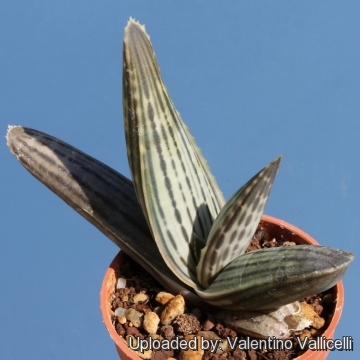 Aloe striata subs. karasbergensis Photo by: Valentino Vallicelli
Aloe striata subs. karasbergensis Photo by: Valentino Vallicelli Aloe striata subs. karasbergensis Photo by: Valentino Vallicelli
Aloe striata subs. karasbergensis Photo by: Valentino Vallicelli Aloe striata subs. karasbergensis Photo by: Valentino Vallicelli
Aloe striata subs. karasbergensis Photo by: Valentino VallicelliSend a photo of this plant.The gallery now contains thousands of pictures, however it is possible to do even more. We are, of course, seeking photos of species not yet shown in the gallery but not only that, we are also looking for better pictures than those already present.
Read More... Cultivation and Propagation: It is is an interesting succulent easy to cultivate under a wide variety of climatic conditions provided it is planted in a well-drained situation given adequate water but not over-watered. Although it originates in sub tropical tropical climate in the most arid regions of the Northern Cape and South-Namibia, in cultivation it can tolerate more water - but when over irrigated or in heavy soils the leaves will split open. . It is also a great choice for a hillside garden as roots are very tenacious.
Growth rate: It is pretty fast grower and appreciates a lot of water in warmer weather. Even young plants grow fairly quickly in the garden or in good sized pot.
Soil: Well-de-composed compost addition to well draining sandy-gritty mix creating a rich soil is advantageous.
Pots: It needs a relatively shallow pot to accommodate its fibrous roots and provide a very good drainage. It may stay in the same pot for many years.
Watering: Water aloes more than other succulents, keeping in mind that the pots dry out between watering. Keep dry in winter or when night temperatures remain below 10° C. Water it less than average if in bigger pots. Outdoors it grows to astonishing proportions also in areas with wet winters, so don't be afraid to plant this in a high-rainfall area. They are really not very demanding and regular watering in their growing season creates healthy disease resistant plants that will flower better.
Special need: Provide very good ventilation. Nearly all problems occur as a result of overwatering and poor ventilation, especially when weather conditions are dull and cool or very humid.
Fertilization: Light fertilizer seems to boost its growth whenever additional water is given. Feed it during the growing season with a fertilizer specifically formulated for cactus and succulents (high potash fertilizer with a dilute low nitrogen), including all micro nutrients and trace elements diluted to ½ the strength recommended on the label. It thrive in poor soils and needs a limited supplies of fertilizer to avoid the plant developing excess vegetation, which is easily attacked by fungal diseases.
Exposure: It will do its best in full sun to light shade and become stressed with inadequate light which could result in poor growth and unnatural shape. Will handle very harsh sunlight, sometimes taking on a coppery leaf sheen, a sign generally associated with stress.
Hardiness: It is a hardy aloe but not completely frost resistant. It will survive light frost but the flowers will not, but for safe cultivation it is best to avoid freezing temperatures. USDA Zone 9.
Pest and diseases: Occasionally these plants are infested by scale and aphids, but all known garden pests can be kept to a minimum by simply ensuring optimal growing conditions and healthy plants.
Use: It can be cultivated outdoors in raised beds and terraces and is one of the aloes that can form a centre piece in a garden or grouped, creating a magnificent backdrop, if you have the space, to provide form and texture. It do well in big pots as well.
Maintenance: Removal of old flower stalks.
Propagation: Aloe striata can be propagated by seed and suckers (if available). Sow seed in a well drained medium in shallow trays and cover lightly with sand or the seed will blow away. Once the seeds begin to germinate, keep moist but watch out for overwatering as the seedlings could rot. Transplant into small pots once they are about 3-4 cm high (approximately 6 months) using a sandy loam medium and feed with organic fertilizer at least once a quarter to ensure healthy growth. Plant regeneration (micropropagation) from root and embryo tissue is successful as well.


















